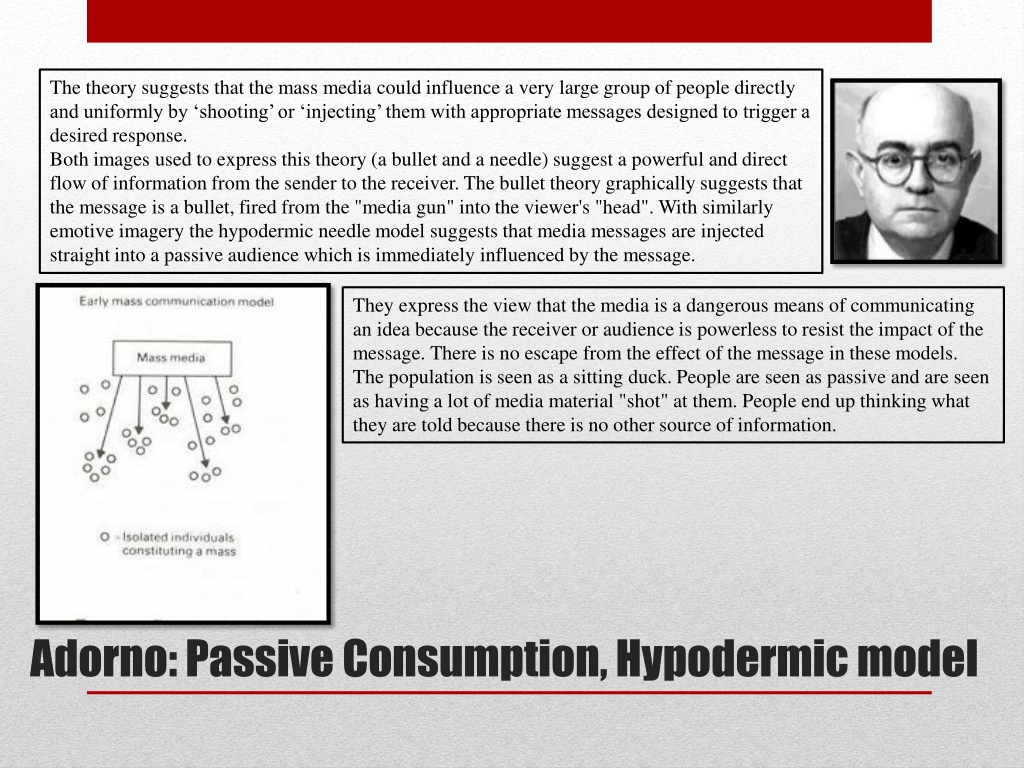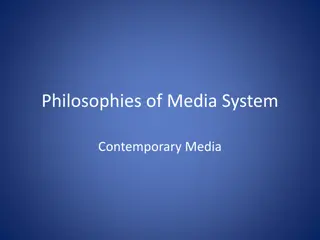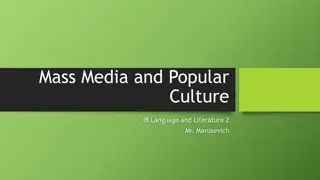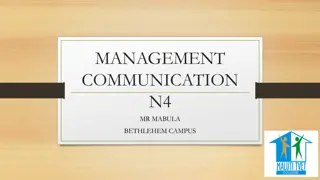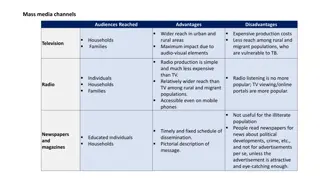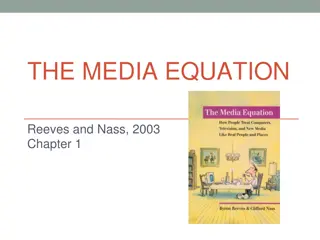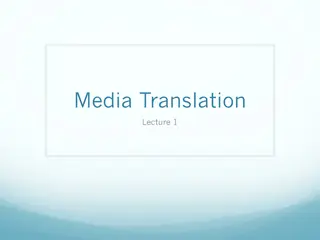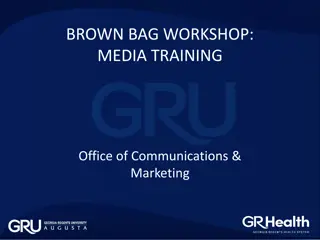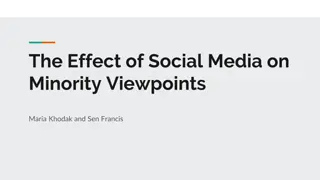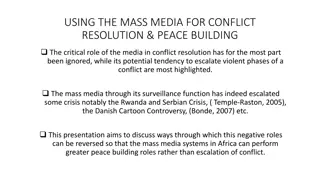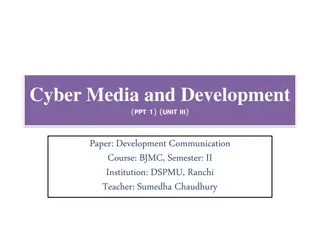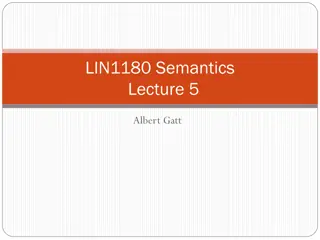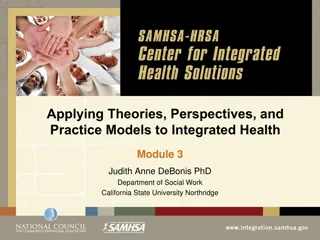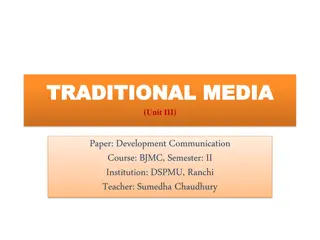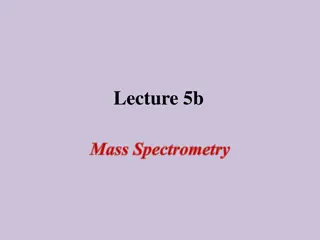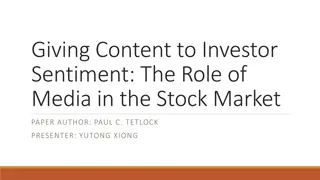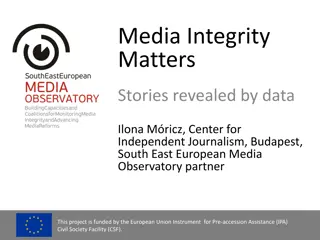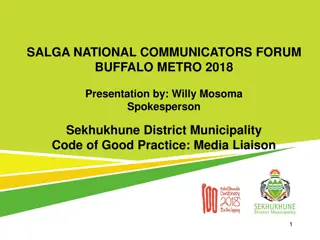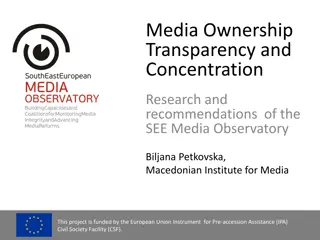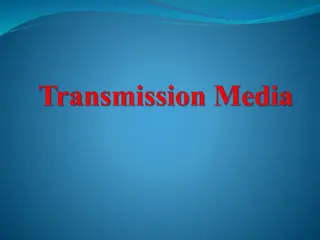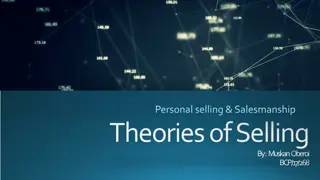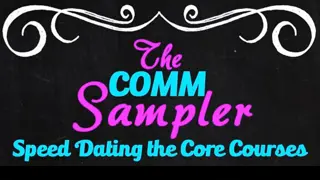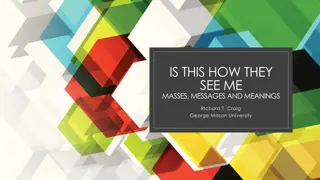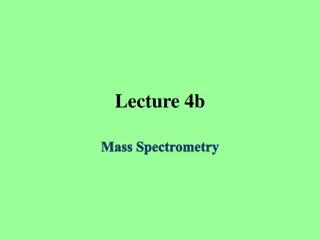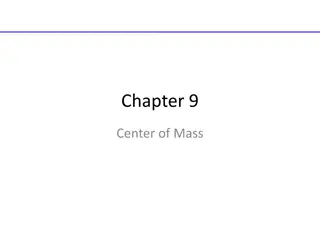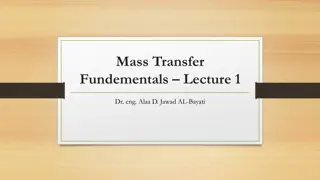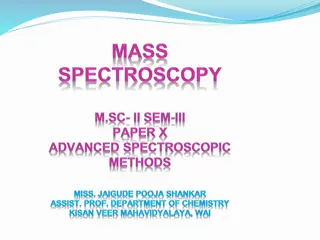The Influence of Mass Media Theories on Modern Communication
The theories of mass media influence range from the powerful and direct "bullet theory" to the passive recipient model of the "hypodermic needle." While traditional theories depict audiences as passive receivers, modern perspectives emphasize the active role of consumers in defining culture through digital media. Concepts like the two-step flow theory and prosumers highlight the evolving relationship between audiences and producers in today's media landscape.
Download Presentation

Please find below an Image/Link to download the presentation.
The content on the website is provided AS IS for your information and personal use only. It may not be sold, licensed, or shared on other websites without obtaining consent from the author. Download presentation by click this link. If you encounter any issues during the download, it is possible that the publisher has removed the file from their server.
E N D
Presentation Transcript
The theory suggests that the mass media could influence a very large group of people directly and uniformly by shooting or injecting them with appropriate messages designed to trigger a desired response. Both images used to express this theory (a bullet and a needle) suggest a powerful and direct flow of information from the sender to the receiver. The bullet theory graphically suggests that the message is a bullet, fired from the "media gun" into the viewer's "head". With similarly emotive imagery the hypodermic needle model suggests that media messages are injected straight into a passive audience which is immediately influenced by the message. They express the view that the media is a dangerous means of communicating an idea because the receiver or audience is powerless to resist the impact of the message. There is no escape from the effect of the message in these models. The population is seen as a sitting duck. People are seen as passive and are seen as having a lot of media material "shot" at them. People end up thinking what they are told because there is no other source of information. Adorno: Passive Consumption, Hypodermic model
This theory asserts that information from the media moves in two distinct stages. First, individuals (opinion leaders) who pay close attention to the mass media and its messages receive the information. Opinion leaders pass on their own interpretations in addition to the actual media content. The term personal influence was coined to refer to the process intervening between the media s direct message and the audience s ultimate reaction to that message. Opinion leaders are quite influential in getting people to change their attitudes and behaviours and are quite similar to those they influence. The two-step flow theory has improved our understanding of how the mass media influence decision making. The theory refined the ability to predict the influence of media messages on audience behaviour, and it helped explain why certain media campaigns may have failed to alter audience attitudes an behaviour. The two-step flow theory gave way to the multi-step flow theory of mass communication or diffusion of innovation theory. Katz and Lazarsfeld: Two step flow theory
He focused on the way digital media is changing the experience of media in general. In modern society, the consumer is now more responsible for defining our culture and becoming a producer in their own right as they are more creative. He argues that classic media fails to define when the categories of audience and producers unite. Audiences can become our own producers thanks to websites such as YouTube. Through this we can create our own identity and influence others. Gender identity for example has become less restricted to previous representations and Web 2.0 has allowed this individual freedom. Gauntlett's theory suggests that audiences change to become more so active than passive towards media. It is impossible to tell how an audience may react to a certain product and therefore it may evolve into something similar which has already had a good public reaction. This is why so much money is spent on audience research as the product must attract the correct audience etc. Media Studies students regularly make their own short film productions but are also regular consumers of the media - in doing so they are both producer and consumer blurring the boundaries of traditional media consumption". Gauntlett published Media Studies 2.0 online in 2007, which argues that classic media studies fails to define when the categories of audiences and producers unite, and that new, altered teaching methods are needed. He states that because of web 2.0, we as audiences can become our own producers thanks to websites such as YouTube. Through this we can create our own identity and even influence other peoples. David Gauntlett: Prosumer
Watching films in a cinema involves a primary mode of audience engagement as the spectator is immersed with the narrative while watching a programme at home on television may involve eating a meal at the same time, texting, using social media or other additional activities. Tertiary audience engagement is using the text as background media like music radio Primary (close attention) e.g. cinema, books Secondary (the medium in question is relegated to the background) e.g. Radio, some TV, music Tertiary (although medium is present, no conscious monitoring takes place) e.g. pictures Jeremy Tunstall: Audience Engagement
Different audiences gain different pleasures from a media text e.g. Gravity can be enjoyed via diversion or escapism, it can use surveillance to give information to audiences and can also be discussed on forums and blogs as a form of developing personal relationships (common also in video games). Personal identity can be developed with audiences who relate to certain characters more than others. The Uses and Gratifications Theory follows a basic model. It is an audience centred approach. When an audience actively seeks out media, they are typically seeking it in order to gratify a need. For example, in social situations, people may feel more confident and knowledgeable when they have specific facts and stories from media to add to conversation. By seeking out media, a person fulfils a need to be informed. Blumler and Katz: Uses and Gratifications Theory
